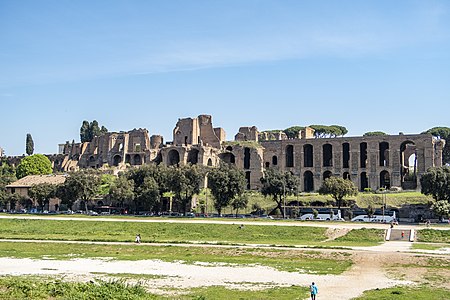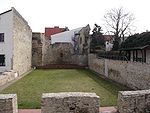Palatine Hill

The Palatine Hill (; Latin: Collis Palatium or Mons Palatinus; Italian: Palatino [palaˈtiːno]), which relative to the seven hills of Rome is the centremost, is one of the most ancient parts of the city and has been called "the first nucleus of the Roman Empire." The site is now mainly a large open-air museum while the Palatine Museum houses many finds from the excavations here and from other ancient Italian sites. Imperial palaces were built here, starting with Augustus. Before imperial times the hill was mostly occupied by the houses of the rich. The hill originally had two summits separated by a depression; the highest part was called Palatium and the other Germalus (or Cermalus). Using the Forma Urbis its perimeter enclosed 63 acres (25 ha); while the Regionary Catalogues of the 4th century enclose 131 acres (53 ha).
Excerpt from the Wikipedia article Palatine Hill (License: CC BY-SA 3.0, Authors, Images).Palatine Hill
Via di San Bonaventura, Rome Municipio Roma I
Geographical coordinates (GPS) Address Nearby Places Show on map
Geographical coordinates (GPS)
| Latitude | Longitude |
|---|---|
| N 41.888333333333 ° | E 12.486944444444 ° |
Address
Domus Augustana
Via di San Bonaventura
00184 Rome, Municipio Roma I
Lazio, Italy
Open on Google Maps







